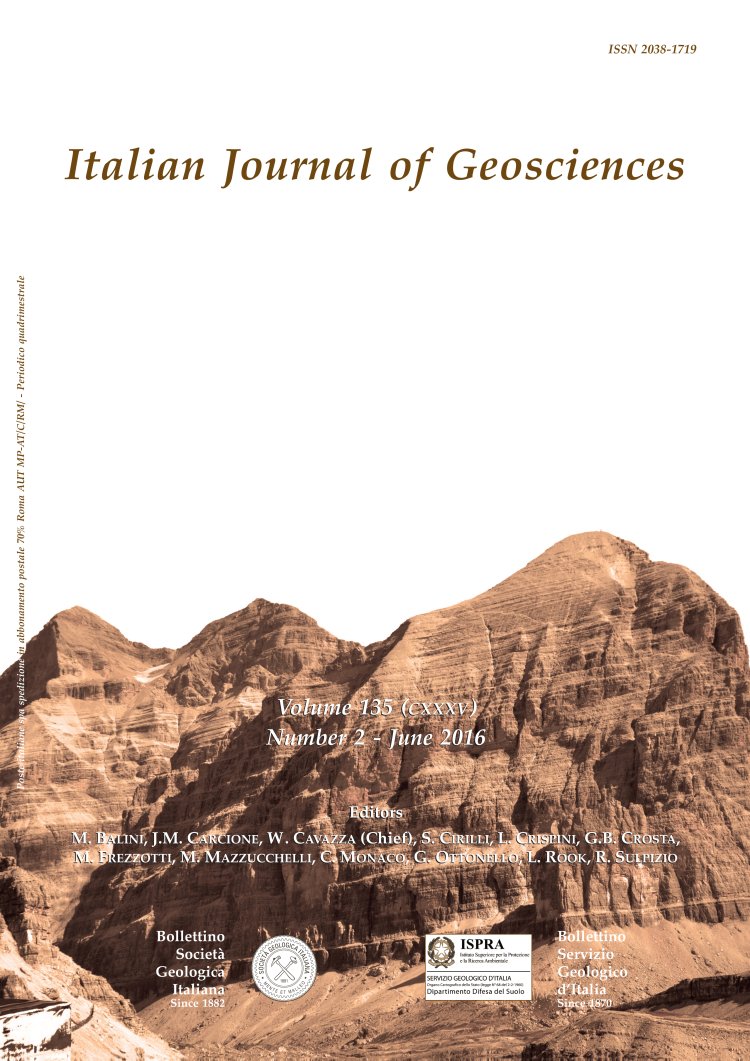
Textural and compositional controls on modern fluvial and beach sands of Mediterranean coastal Rif belt (Northern Rif, Morocco)
Hanane Reddad (*), Hajar El Talibi (**), Francesco Perri (***), Said El Moussaoui (**), Mohamed Amine Zerdeb (**), Mohamed Najib Zaghloul (**) & Salvatore Critelli (***)
(*) University Sultan Moulay Sliman, Beni Mellal, Morocco.
(**) Department of Earth Sciences, Faculty of Sciences and Techniques, University Abdelmalek Essaadi, Tangier, Morocco.
(***) Dipartimento di Biologia, Ecologia e Scienze della Terra, Università della Calabria, Italy. Corresponding author e-mail: francesco.perri@unical.it
Volume: 135 (2016) f.2
Pages: 336-349
Abstract
Texture and composition of beach (154 samples) and fluvial (26 samples) sands collected between the Amsa and Amter villages (Rif Thrust-Belt, Morocco) are used to characterize the hinterland petrological provinces, their drainage patterns and dispersal pathways.
Multivariate analytical techniques were carried out on the textural and compositional data. The analyzed sediments are usually coarsegrained, and locally medium to fine-grained sands, varying from well sorted and graded samples (Amsa river samples) to poorly sorted and graded samples (Oued Laou, Sidi Yahia Aarab and Kanar river samples). The relationships of the coarser one percentile (C) and the median value (M) on the C-M diagram suggest that transport processes are saltation and suspension for medium to fine grained sands, and bedload-traction and rolling for coarser sand and gravels.
The morphology of quartz grains, mainly characterized by angular to sub-angular shapes with V-shaped cracks and conchoidal fractures, is the result of those transport processes. Two sand petrofacies were identified and reflect the main clastic contribution of source rocks belonging to the Internal Domain Units of the Rif Belt. Sands from beaches and related fluvial systems draining Ras Akaili, Tissouka, Dhar Nesk, and Beni Mezala Mountains, have a metamorphicsedimenticlastic petrofacies (between the Amsa and Bouhmed area) and a metamorphic-ultramafic petrofacies (between the Bouhmed and Amter area), mainly derived from the Paleozoic metasedimentary rocks of the Ghomaride and Sebtide complexes.
Multivariate analytical techniques were carried out on the textural and compositional data. The analyzed sediments are usually coarsegrained, and locally medium to fine-grained sands, varying from well sorted and graded samples (Amsa river samples) to poorly sorted and graded samples (Oued Laou, Sidi Yahia Aarab and Kanar river samples). The relationships of the coarser one percentile (C) and the median value (M) on the C-M diagram suggest that transport processes are saltation and suspension for medium to fine grained sands, and bedload-traction and rolling for coarser sand and gravels.
The morphology of quartz grains, mainly characterized by angular to sub-angular shapes with V-shaped cracks and conchoidal fractures, is the result of those transport processes. Two sand petrofacies were identified and reflect the main clastic contribution of source rocks belonging to the Internal Domain Units of the Rif Belt. Sands from beaches and related fluvial systems draining Ras Akaili, Tissouka, Dhar Nesk, and Beni Mezala Mountains, have a metamorphicsedimenticlastic petrofacies (between the Amsa and Bouhmed area) and a metamorphic-ultramafic petrofacies (between the Bouhmed and Amter area), mainly derived from the Paleozoic metasedimentary rocks of the Ghomaride and Sebtide complexes.
Keywords
Get Full Text